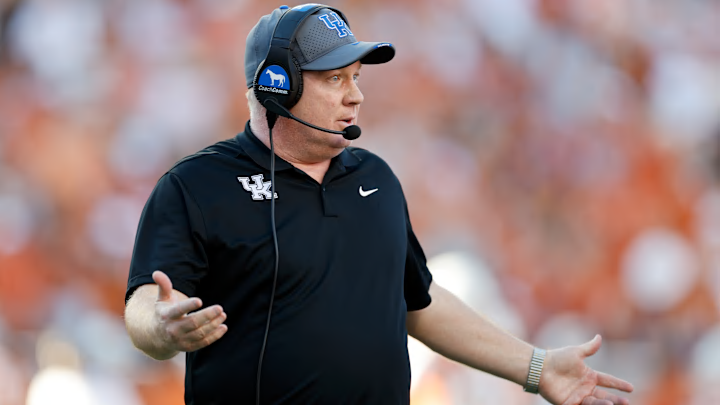More misery for the Cats in 2025
For Kentucky fans desperately hoping the nightmare of a 4-8 season was a one-off anomaly, ESPN’s advanced metrics have delivered a cold dose of reality. The program underwent a massive roster transformation this offseason, bringing in over 50 new players to flush out the disappointment of 2024. But according to the highly respected Football Power Index (FPI), that overhaul may not be enough to steer the ship back on course.
The FPI, a predictive model that analyzes a team's strength based on past performance, returning talent, and recruiting data, has projected Kentucky’s 2025 record to land somewhere between 5.6 and 6.4 wins. In layman's terms, the computers are forecasting another season teetering on the edge of mediocrity—either another losing record or, at best, a return to a low-tier bowl game. For a program that is trying to establish itself as a consistent eight-to-ten-win contender, this is a sobering outlook.
The harsh truth is, this projection might even feel optimistic to the most cynical observers, many of whom doubt the Wildcats can even reach the five-win mark given their brutal SEC schedule. But the context makes the FPI number sting. Mark Stoops is one of the highest-paid coaches in the nation, earning over $9 million annually. His staff is compensated at the top of the sport. The infrastructure and financial commitment are in place to compete at a high level. Yet, the forecast for Year 13 of his tenure is being framed as another grueling slog just to reach bowl eligibility.

This wasn’t the vision Stoops sold when he painstakingly built Kentucky from the SEC cellar into a respected power. The "process" that DL coach Anwar Stewart wants BBN to get behind, isn't working.
The expectation shifted from simply "getting to six wins" to competing in every SEC game and making New Year's Day bowl appearances. The 2024 collapse shattered that momentum, and this projection from ESPN's Football Power Index suggests the climb back will be anything but swift. If the FPI’s forecast proves accurate, Big Blue Nation is staring down the barrel of another long fall, and the uncomfortable questions about the program’s long-term trajectory under its current leadership will inevitably grow deafening.
